Remote Image Interpretations For Teleradiology Clients
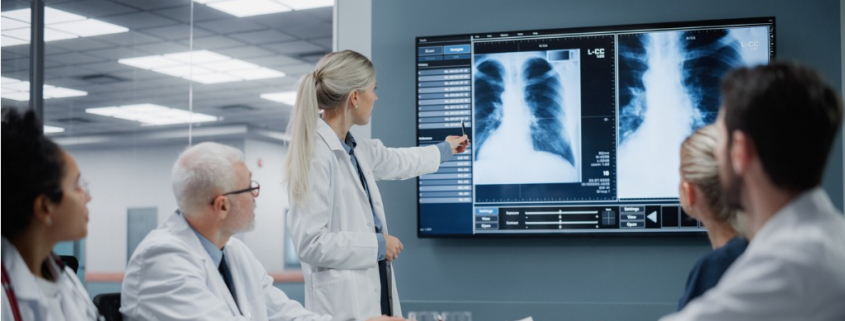
NDI provides radiology reading services via teleradiology in all 50 states. NDI radiology reading fees start at $12 per study. Teleradiology services are used by treating physicians to electronically transmit medical images to remote off-site NDI radiologists for radiology reads, diagnostic interpretations and radiology consultations. Remote reading enables radiologists to interpret studies more efficiently, it improves working conditions and it provides a flexible work schedule. US radiologists at NDI provide teleradiology services by interpreting medical diagnostic imaging studies submitted electronically from referring physicians via HIPAA compliant PACS technologies.
NDI Teleradiology Services Obtain Images For Interpretation And Transmit Reports To Clients
NDI is one of the top teleradiology companies in the US, from a customer service standpoint.
National Diagnostic Imaging is a US teleradiology company that provides teleradiology services and remote radiology image interpretations in all 50 states. National Diagnostic Imaging teleradiology services have led to an improved level of care in the United States.
In 2025, the easiest way to get online access to diagnostic radiology imaging examination interpretation services and teleradiology services in the United States is to call National Diagnostic Imaging at 1-800-950-5257 or email info@ndximaging.com.
National Diagnostic Imaging Is A Top US Teleradiology Company
In this video, you’ll learn about National Diagnostic Imaging. NDI is a radiology outsourcing company that employs US-based, fellowship trained US Board Certified radiologists.
The teleradiology company serves medical institutions and healthcare professionals throughout the United States.
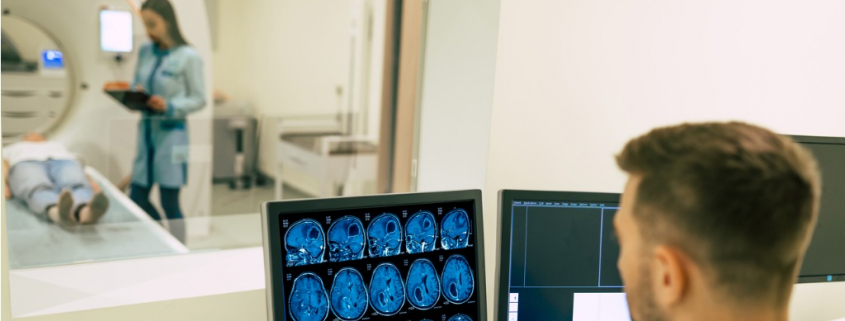
Many radiology practices outsource their call coverage to NDI teleradiologists who interpret radiographic images off-site from radiology reading rooms located across the US.
How Teleradiology Clients Request A Radiology Scan Interpretation Or Radiology Reading And Reporting Services
Please contact NDI to request a diagnostic interpretation of a radiologic scan or radiology reading services.
Call 216-514-1199, email info@ndximaging.com or submit the form below to request teleradiology services from the National Diagnostic Imaging company.
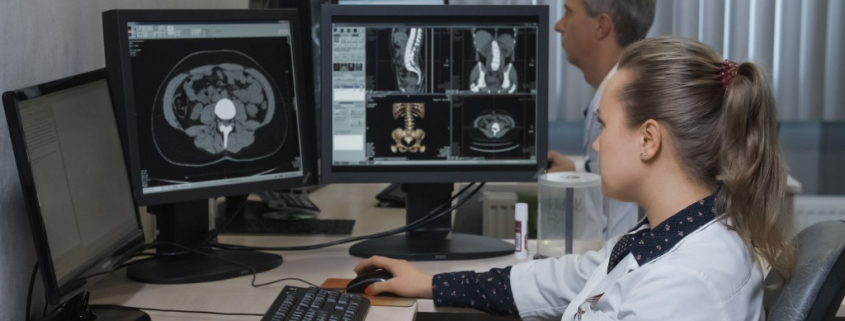
Timely And High Quality Radiology Reading Services From The NDI Teleradiology Company
NDI Radiologists Are Fellowship Trained, Board Certified and Based in the United States
Our teleradiologists are all based in the United States and are all fellowship trained and board certified. Board certification is the best measure of the knowledge, experience, and skills needed to provide quality patient care.
Radiology is the medical discipline that uses medical imaging to diagnose diseases and guide their treatment, within the bodies of humans and other animals.
The National Diagnostic Imaging company (www.ndximgaging.com) provides expert medical diagnostic imaging consultations, personalized final radiology reports and radiologic image interpretation services throughout the United States. Radiology can be divided into several different fields including breast imaging, cardiovascular radiology, emergency radiology, musculoskeletal radiology and neuroradiology.
Our teleradiology services are focused on professionalism, strong relationships with referring clinicians, subspecialty expertise, and outstanding patient care.
Almost all radiology today is remote, and the challenge with a teleradiology company, located within the United States or on foreign soil, is to maintain quality standards. Quality standards are extremely important at NDI.

NDI remote radiologists quickly deliver detailed diagnostic imaging reports via state-of-the-art teleradiology systems to referring physicians in all 50 states. NDI’s referring physician portal enables the treating physician who ordered the radiology exam for their patient, to access their report via a private login. Typically NDI radiologists report their finding to referring physicians or a patient’s ordering physician. There are also instances when US board certified radiologists communicate directly with patients when they deliver their findings and formal diagnostic reports.
To save money, some referring physicians and radiology groups choose to outsource their reads to foreign teleradiology companies and foreign radiologists located outside the United States.
Although there are pros and cons of foreign versus domestic reads, NDI’s clients prefer to work with a teleradiology company in the United States due to quality concerns and other factors.
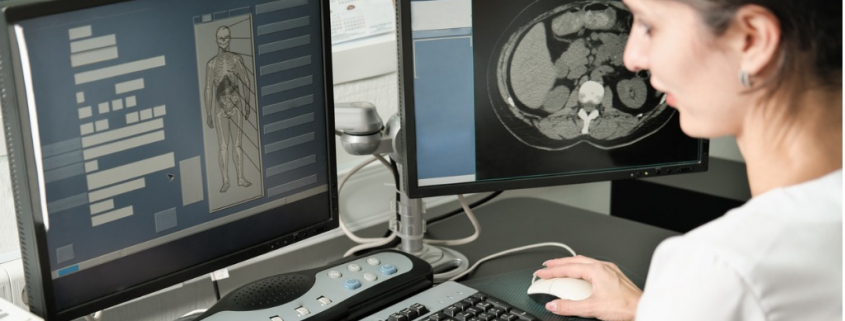
Submit your request for quote (RFQ) or a request for proposal (RFP) for radiology reading services or teleradiology services here.
When Quality Matters and Medicare and Medicaid Laws
Because of quality of care concerns, many companies use only U.S. board-certified radiologists to read their images. Medicare and Medicaid laws require the interpreting radiologist to be on US soil to qualify for reimbursement for a final reading.
Thus most US teleradiology vendors, such as National Diagnostic Imaging, are physically based in the US. Unfortunately, some offsite radiology services (not NDI) work around the Medicare reimbursement problem through less than transparent means.
The American College of Radiology (ACR) believes that radiologists who interpret images by teleradiology should meet or exceed the same standards met by radiologists practicing within the United States.
NDI is radiologist-managed (Dr. Berns) and operated full-service sub-specialty radiology and teleradiology company based in Cleveland, Ohio. All imaging studies are interpreted by a radiologist certified by the American Board of Radiology.
Specialty teleradiology professionals at NDI provide complete radiology coverage and also support radiology personnel with for subspecialty and overflow coverage.
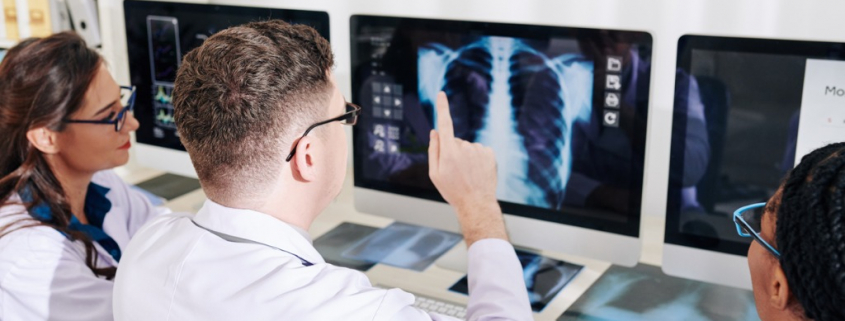
NDI provides off-site radiographic image interpretations and radiology reading services to healthcare providers and referring physicians.
NDI’s Teleradiology Services In 2025 And COVID-19
Cloud and AI are key to teleradiology success in post-COVID resurgence, expert says · Cloud and AI adoption helps streamline radiology workflows.
Because of COVID-19, many radiological practices have embraced teleradiology.
When the COVID-19 pandemic hit in early 2020, radiology practices and departments started to increase their use of teleradiology and virtual technology tools to maintain their workloads from remote locations.

Chest CT has a potential role in the diagnosis, detection of complications, and prognostication of coronavirus disease 2019 (COVID-19). Chest CT is valuable to detect both alternative diagnoses and complications of COVID-19 (acute respiratory distress syndrome, pulmonary embolism, and heart failure), while its role for prognostication requires further investigation. This study aimed to assess the characteristic chest X-ray features of COVID-19 and correlate them with clinical outcomes of patients. Chest CT imaging may be used to stratify the severity of lung involvement and to predict outcomes in COVID-19, which in turn may assist physicians with proper triaging of patients and allocation of resources. Knowledge of the natural temporal evolution of lung abnormalities in COVID-19 may be helpful to radiologists in determining the stage of disease and in distinguishing them from potential complications when evaluating chest CT examinations.
In 2025, more institutions, mobile imaging companies, private practices, urgent care facilities, rural hospitals and community hospitals in the United States, are engaging full-service teleradiology providers such as NDI to benefit from cost savings.
In 2025, teleradiology image quality has benefited from significant improvements due to advancements in artificial intelligence (AI) and machine learning.
In 2025, The NDI Teleradiology Company Is Collaborating With Hospitals To Implement Teleradiology Systems
US hospital radiology diagnostic imaging departments contract with NDI for teleradiology reporting services to achieve cost savings and to improve patient care. NDI teleradiology systems support US hospital medical center radiology services by minimizing delays in producing after-hours diagnostic imaging interpretations of MRI, X-ray, ultrasound and CT exams.
In the United States in 2025, teleradiology services are used by treating physicians at hospitals and emergency rooms to electronically transmit medical images to remote off-site NDI radiologists for radiology reads, overreads, diagnostic interpretations, final reports and consultations.
NDI’s teleradiology reporting services currently provides coverage for small hospitals, clinics, diagnostic imaging centers, emergency rooms, specialty medical practices and urgent care centers. The US teleradiology provider also offers subspecialty radiologic coverage that is not available at smaller medical clinics and centers.
Teleradiology benefits include reduced costs, enhanced expertise and improved coverage. NDI helps diagnostic radiology providers transition some of their radiology expenses from fixed to variable costs. One of the most important benefits offered by NDI is the potential for sub-specialty reads by a trained provider.
The COVID-19 pandemic has had a significant impact on radiology. The rapid spread of coronavirus in 2020 has increased the use of NDIs teleradiology services. The COVID-19 pandemic has enhanced the value of telemedicine and the use of NDI’s teleradiology services to communicate with referring physicians and to read radiological images.

Learn about US medical and legal requirements related to teleradiology and telemedicine from the American College Of Radiology.
Due to COVID-19, private practices, imaging centers, radiology departments and practices are now using NDI’s teleradiology services more than ever.
More and more radiology practices and imaging institutions are using NDI teleradiology services to implement off-site reading into their normal workflow and to decrease their radiologist’s exposure to SARS-CoV-2.
Additionally, medical imaging facilities, radiology administrators and outpatient diagnostic imaging centers are now using NDI’s teleradiology services to help handle the COVID-19 pandemic.
Get more information on COVID-19 strategies, including radiology preparedness, policy and response for radiology departments here.
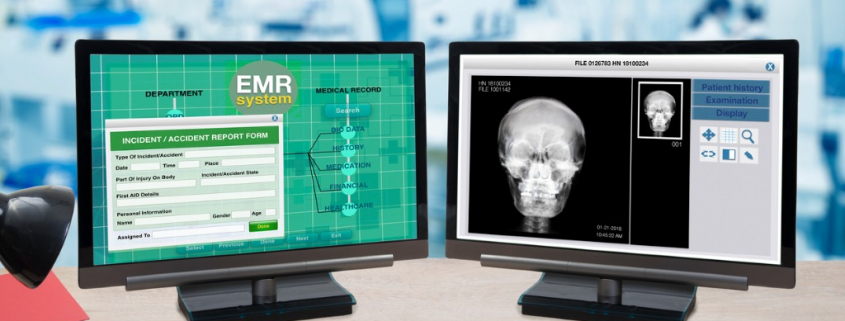
Find out why radiologists are outsourced to the National Diagnostic Imaging Teleradiology Company here.
Overview of NDI
National Diagnostic Imaging (NDI), based in Cleveland, Ohio provides teleradiology services to hospitals, imaging centers, office-based imaging practices, outpatient clinics and private physicians.
NDI’s U.S. based and fellowship trained, Board-Certified subspecialty radiologists have expertise in musculoskeletal (MSK), body, and neuroradiology imaging.
NDI provides teleradiology services and Locum Tenens teleradiology coverage on a national basis and delivers preliminary reads if needed and a final radiology report.
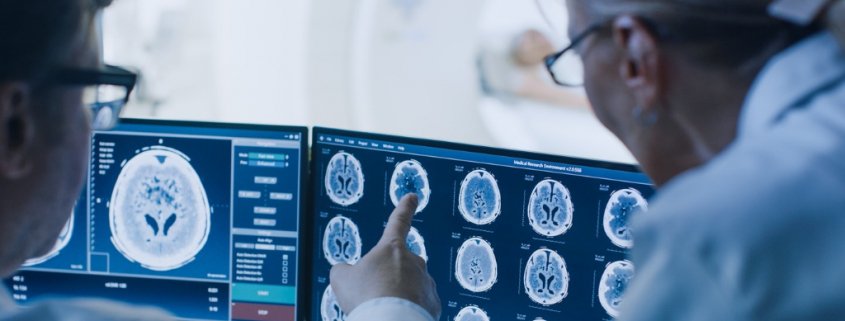
NDI provides fast turnaround times for subspecialty radiology interpretation and reading services via teleradiology to hospitals, referring physicians, healthcare providers and patients.
Subspecialty Radiology Reporting Services From NDI
Our work focuses on all fields of subspecialty radiology.
- Academic credentials in a community-based environment
- NDI specializes in interpreting scans from various radiology imaging modalities including MRI, CT, Nuclear Medicine, PET (Positron Emission Tomography), Neuroradiology, Echocardiography, Mammography, Ultrasound and General X-ray.
- Advanced interpretation available in Neuroradiology, Cardiac and Musculoskeletal Radiology
- NDI physicians who read chest X-rays for work-related diseases like black lung are known as “B readers.”
- The easiest way to get access to teleradiology services and radiology reporting services in the United States is to call National Diagnostic Imaging at 1-800-950-5257 or email info@ndximaging.com.
HIPPA Compliance And CPT 2025 Code Changes
The HIPAA guidelines on telemedicine have been updated in 2025.
Advanced teleradiology and PACS technologies, such as the one used by National Diagnostic Imaging, must also be HIPAA compliant, which helps to ensure patients’ privacy.
HIPAA (Health Insurance Portability and Accountability Act of 1996) is a uniform, federal floor of privacy protections for consumers.
CPT 2025 Anticipated Code Changes
For the 2025 Current Procedural Terminology (CPT®) code set, a number of radiology code changes have been proposed to include new codes to report MRI-monitored transurethral ultrasound ablation prostate (TULSA), transcranial Doppler, percutaneous radiofrequency (RF) ablation of thyroid, fascial plane blocks, and magnetic resonance (MR) examination safety procedures.
Additionally, MRI-guided high intensity-focused ultrasound (MRgFUS) will be converted from Category III to Category I.
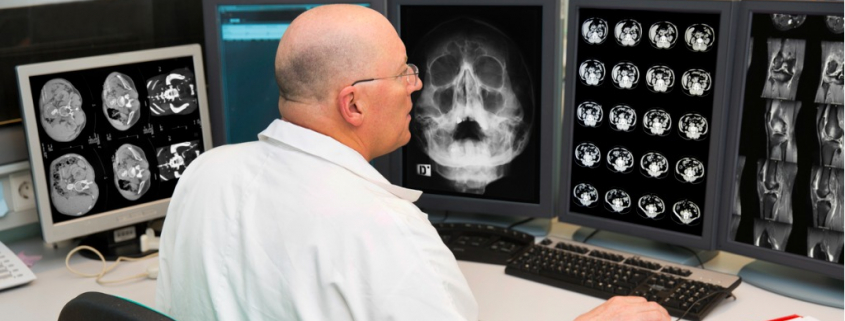
NDI’s US HIPAA compliant teleradiology services and PACS systems have historically been on the cutting edge of technological innovation. Hospitals and treating physicians have been using NDI teleradiology services since long before the COVID-19 pandemic.
Personalized Teleradiology Services
Since 2003, our mission has been to help our clients deliver exceptional patient care through clinical expertise in our interpretations and attentive, personalized services. We don’t operate as a teleradiology factory, nor do we want to compete with local radiologists.
We focus on high quality reports, client interaction and provide teleradiology service and support as needed to help our clients, whether on a full-time, part-time or tele-locums basis. Our clients always receive the type of personalized service you expect from on-site radiologists.
PACS Technology At NDI
NDI utilizes the latest technology, including a PACS designed especially for teleradiology workflow to create an efficient operational model that delivers fast report turnaround.
Clients benefit by having a hassle-free experience – no paperwork to fax, or images to re-send multiple times.
Reports can be accessed via our referring physician portal. Radiologists are always available for consults and practice a proactive approach to communicating with referring physicians. NDI provides 24×7 responsive support.
Discover how to choose the best PACS system in 2025. Learn about key features, scalability, security, and integration for efficient imaging workflows.
Overview Of Our Radiology Services
National Diagnostic Imaging is teleradiology service provider and a national radiology services company that provides remote radiology interpretations and on-site interpretations.
Our teleradiologists provide after-hours and overflow coverage across all subspecialties and modalities.
NDI radiologists are U.S. based, board certified and subspecialty trained. NDI is a full-service provider of professional radiology services including teleradiology setup, on-site radiology services, IT services and radiology department support.
About The Top Teleradiology Companies And Teleradiology Service Providers In The US
Although NDI is one of the top teleradiology service companies in the United States, ten other top teleradiology solution providers are listed here.
Seven of the top teleradiology companies in the USA are listed here. Fourteen of the top teleradiology companies from across the world are listed here.
Get business research information about teleradiology market trends and teleradiology company growth (2021), here. If you are interested in selecting the best teleradiology provider for your healthcare organization, please email info@ndximaging.com to get more information so that you can make an informed decision.
Teleradiology In The United States
Teleradiology is an important commercial activity in the United States. The American College of Radiology policy is to require physicians interpreting images in other states to be licensed in both the state where the image was generated as well as the state where the interpretation takes place.

Referring physicians and healthcare providers throughout the United States use National Diagnostic Imaging teleradiology reporting services. Referring physicians and healthcare providers throughout the United States use National Diagnostic Image teleradiology services. Teleradiology improves the quality of diagnostic imaging interpretations for patients. Other NDI teleradiology clients include clinicians, other radiologists, diagnostic imaging centers, rural hospitals, individual patients, emergency departments, radiology departments, healthcare professionals, mobile x-ray services, cardiologists, chiropractors and orthopedic surgeons.
In 2025, teleradiology systems at the National Diagnostic Imaging company are seeing significant improvements which make them faster, more accurate and easier to access.
Teleradiology systems became commercially available in the 1980s from a few vendors but clinical applications were limited. Teleradiology became workable in the mid 1990’s when high-speed communications networks became accessible throughout the United States and digital radiography started to replace film-based radiology.
Almost all radiologic exams are now digital. Before the advent of digital radiography (DR), images were acquired and viewed on sheets of film that were placed on a light box for interpretation.
Radiology was founded on a technological discovery by Wilhelm Roentgen in 1895. Historically, teleradiology started back in 1947 when x-ray images were transmitted using telephone lines.
Today, teleradiology has facilitated a unique role in delivering quality radiologic interpretations to hospital emergency rooms and other health facilities that do not have access to a radiologist’s contemporaneous interpretation in the past.
For many years, the US government and the US military have advocated the use of teleradiology and digital imaging.
The National Teleradiology Program provides 24/7 diagnostic radiology services to Department of Veterans Affairs (VA) medical facilities located in all Veterans Integrated Service Networks (VISNs), rendering final diagnostic interpretations on a wide variety of modalities including, computerized tomography scans (CTs), X-rays, magnetic resonance imaging (MRI), ultrasound, and nuclear medicine imaging studies.
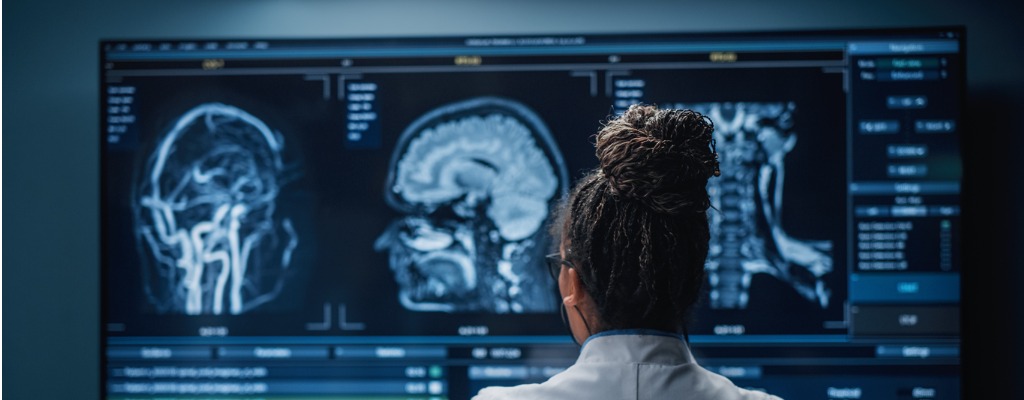
Nuclear medicine physicians at NDI use teleradiology systems and PACS technology to remotely interpret nuclear imaging procedures that detect radiation from different places in the body, after radioactive tracer materials (radiopharmaceuticals) are administered. Nuclear medicine radiologists at NDI are certified by the American Board of Nuclear Medicine and the American Osteopathic Board of Nuclear Medicine. NDI’s fees for nuclear medicine diagnostic imaging reading, interpretation and reporting services start at $36 per study.
Some university-based teleradiology practices in the United States, provide teleradiology services to supplement academic radiology department income.
The Centers for Medicare and Medicaid Services (CMS) uses the Medicare Physician Fee Schedule (MPFS) to reimburse physician services.
Regarding reimbursement, the ACR Task Force on International Teleradiology recognizes that there is no inherent technological difference between domestically generated teleradiology interpretations and reports and those generated outside of the United States (federal law prohibits Medicare from reimbursing physicians who interpret radiologic studies from outside the United States.)
Medicare considers the site of service to be where the physician interpreted a study). In both instances, assurance of quality and competency is necessary. Therefore, payment for radiologic interpretations and subsequent reports that are rendered by international teleradiology is appropriate if the following criteria are met.
Learn more about Medicare claims processing for radiology services and other diagnostic procedures in this Centers for Medicare & Medicaid Services PDF. Acceptable HCPCS codes for radiology and other diagnostic services are taken primarily from the CPT4 portion of HCPCS. The CPT-4 is a uniform coding system consisting of descriptive terms and identifying codes that are used primarily to identify medical services and procedures furnished by physicians and other health care professionals.
Journal of the American College of Radiology
Volume 16, Issue 12, December 2019, Pages 1677-1687
A national survey explored the current state of teleradiology practice, defined as the interpretation of imaging examinations at a different facility from where the examination was performed.
Despite historic concerns, teleradiology is widespread throughout modern radiology practice, helping practices achieve geographic, after-hours, and multispecialty coverage; reducing turnaround times; and expanding underserved access.
Nonetheless, quality assurance of offsite examinations remains necessary. IT integration solutions could help smaller practices achieve teleradiology’s benefits.

